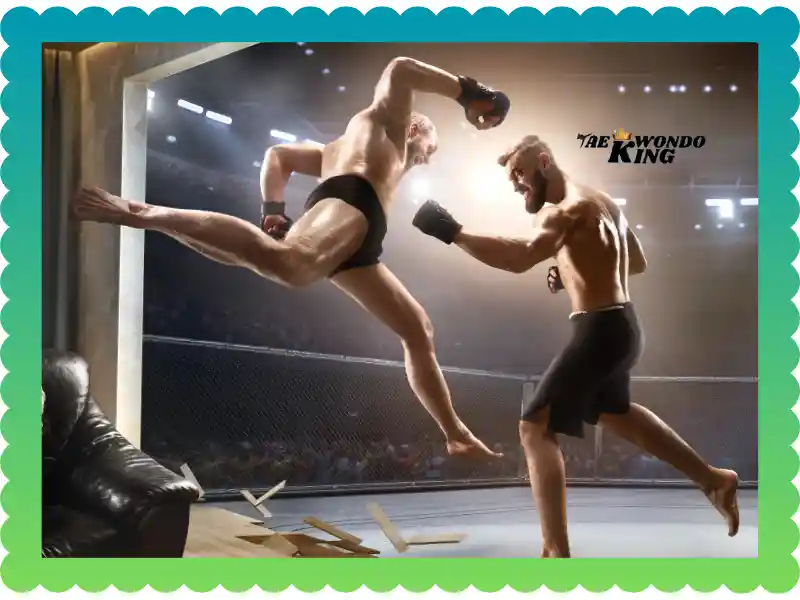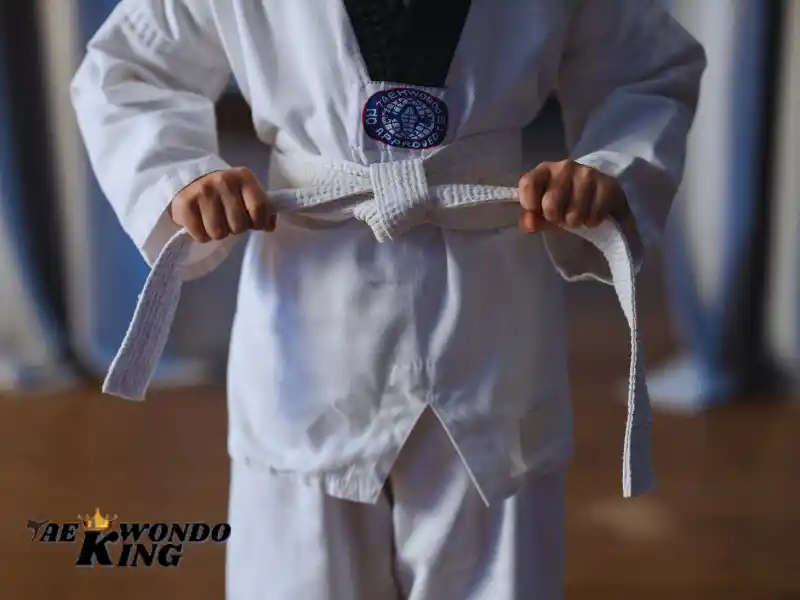
I still remember walking past a gritty training gym in New York City, where a coach once whispered, “The most dangerous martial art isn’t the one with the hardest punches, it’s the one that changes how you think about survival.” That stuck with me because martial arts are more than just moves; they’re about control, mindset, and real-world power. Over the years, I’ve studied and compared different fighting styles, from the discipline of Judo to the raw intensity of Krav Maga.
In this guide, I’ll share what makes each style stand out and why some are considered the most dangerous martial arts in the world. Stick around, you might just find the one that matches your spirit and your fight.
See the latest Top-Rated Adjustable Dumbbells Set Price Today Used by Champions.

The Pitfalls of Danger: A Flawed Metric
Martial arts weren’t solely designed for lethal combat. Many emphasize self-discipline, respect, and physical fitness. Focusing solely on “danger” ignores these valuable aspects and overlooks the context of a fight.
The allure of the “deadliest” martial art sparks curiosity and debate among combat enthusiasts. But the truth is, there’s no single most dangerous martial art. Effectiveness hinges on a complex interplay of factors: the practitioner’s skill, the opponent’s training, and the specific combat scenario. Let’s delve deeper and explore why the true path to Most Dangerous Martial Art prowess lies beyond the pursuit of mere danger.
Street vs. Ring:
Techniques effective in a controlled environment like a ring might not translate well to a chaotic street fight where weapons and multiple attackers are possibilities.
Skill Over Style:
A skilled practitioner of any martial art can be incredibly dangerous. Conversely, an untrained individual using a so-called “deadly” style might be easily subdued.
Mentality Matters:
A fighter’s mental fortitude, strategic thinking, and ability to adapt are crucial in any combat situation. A purely aggressive approach might backfire against a calm and collected opponent.
Respecting the Roots: Different Styles, Different Goals
Martial arts boast rich histories and diverse philosophies. Here’s a glimpse into some prominent styles and their core principles:
Krav Maga:
Developed for real-world self-defense, Krav Maga emphasizes practical techniques to neutralize threats quickly and efficiently.
Muay Thai:
“The Art of Eight Limbs” utilizes punches, elbows, knees, and shins for devastating strikes, making it a formidable striking art.
Brazilian Jiu-Jitsu:
Focuses on grappling techniques, allowing a smaller person to control and subdue a larger opponent through leverage and joint locks.
Taekwondo:
Emphasizes powerful kicks and dynamic movements, offering a strong offense at mid-range and long distances.
See the latest Top-Rated Adjustable Dumbbells Set Price Today Used by Champions.

The Path to Mastery: Beyond Danger Lies Excellence
Instead of chasing the myth of the “most dangerous” martial art, consider these aspects for true martial arts development:
Find Your Fit:
Choose a style that resonates with your interests, physical attributes, and learning style.
Seek a Qualified Instructor:
A good teacher emphasizes proper technique, safety, and the overall philosophy of the martial art.
Embrace the Journey:
Martial arts are lifelong pursuits. Dedication, consistent training, and a willingness to learn are key to achieving fighting prowess.
The Ultimate Victory: Confidence and Self-Control
The most valuable takeaway from martial arts isn’t brute force, but the confidence and self-control it fosters. The ability to navigate conflict peacefully and the self-absurdity to defend yourself if necessary are far more rewarding than simply seeking danger.
The Warrior Within: Beyond Techniques
The most dangerous weapon lies not in the style but in the practitioner. Dedication, fitness, and mental discipline elevate any martial art. A skilled practitioner of a seemingly “less dangerous” art can be incredibly effective in a real fight.
The Pitfalls of Lethality
Focusing solely on lethality can be a trap. Martial arts should empower self-defense, not glorify violence. A true martial artist strives for control and de-escalation whenever possible.
The Path to Mastery: A Lifelong Journey
The pursuit of martial arts excellence is not about finding the “deadliest” style. It’s about self-discovery, discipline, and continuous improvement. Choose a style that resonates with you, train diligently, and cultivate the warrior spirit within.
Remember, the most dangerous martial artist isn’t defined by style, but by the dedication, skill, and character they bring to the art.
FAQs
There isn’t one! “Dangerous” depends on the context (street fight vs. competition) and the practitioner’s skill. Focus on finding a martial art that suits your goals and a qualified instructor.
There isn’t a single “most dangerous” martial art. The danger depends on context (street fight vs. competition), environment, and the practitioner’s skill. Some arts, like Krav Maga, focus on self-defense with instinctive strikes, while others, like Brazilian Jiu-Jitsu, excel in grappling.
Cross-training can be beneficial. Exploring different disciplines broadens your skill set and exposes you to diverse techniques. However, it’s also important to develop a strong foundation in one style before branching out.
Several arts excel in self-defense. Krav Maga emphasizes practical strikes and disarms. Brazilian Jiu-Jitsu focuses on ground fighting for smaller people to subdue attackers. Consider your goals and research different styles.
Most martial arts prioritize safety with proper instruction. The real danger lies in improper technique, leading to injuries. Choose a reputable school with qualified instructors.
Lethality is about causing harm, while effectiveness is about achieving your goal (self-defense, competition win). Martial arts with competition rules might be less lethal but still very effective in self-defense situations.
Many options exist! Karate and Taekwondo emphasize discipline and basic strikes, while Brazilian Jiu-Jitsu offers a good foundation in grappling. Consider your goals (self-defense, competition) and find a qualified instructor.
Effectiveness depends on the situation. Krav Maga’s focus on disarming and quick strikes can be useful. However, any martial art is more effective with proper training and situational awareness.
Many martial arts techniques can be dangerous if used incorrectly. Strikes to the head, neck, or spine can be life-threatening. It’s crucial to train under a qualified instructor who prioritizes safety and proper form.
See the latest Top-Rated Adjustable Dumbbells Set Price Today Used by Champions.


Founder, Owner, and CEO of TaekwondoKing.
He is one of the top 100 martial artists in the World and among the top 20 referees in Bangladesh.
Ehatasamul Alom is an esteemed Kukkiwon Certified Taekwondo 3rd Dan Black Belt with over 15 years of experience in this dynamic martial art. Born in Rajshahi, Bangladesh, Ehatasamul’s journey with Taekwondo began at the tender age of seven. His passion led him to compete at national and international levels, where he has bagged numerous awards and honors. He is also a member of the Taekwondo National Referee Panel.
With a Bachelor’s degree in Sports Science from the prestigious Rajshahi University, Ehatasamul has a deep understanding of the technical and scientific aspects of martial arts and some other martial arts.
In 2022, Ehatasamul created the “TaekwondoKing.com” to share his knowledge, Free Resources, Values, and Real experiences. His articles focus on Taekwondo training techniques, competition strategies, Sport Products Reviews, and the art’s rich history and philosophy. He also writes about the importance of mental fortitude and discipline, key aspects of his teaching philosophy. He has already launched many sports, Taekwondo, and health-related Free online tools. His goal is to inspire both beginners and seasoned practitioners worldwide through insightful and engaging content.
If you need any help, contact Ehatasamul Alom at any time.





you have got a terrific weblog here! would you prefer to make some invite posts on my weblog?